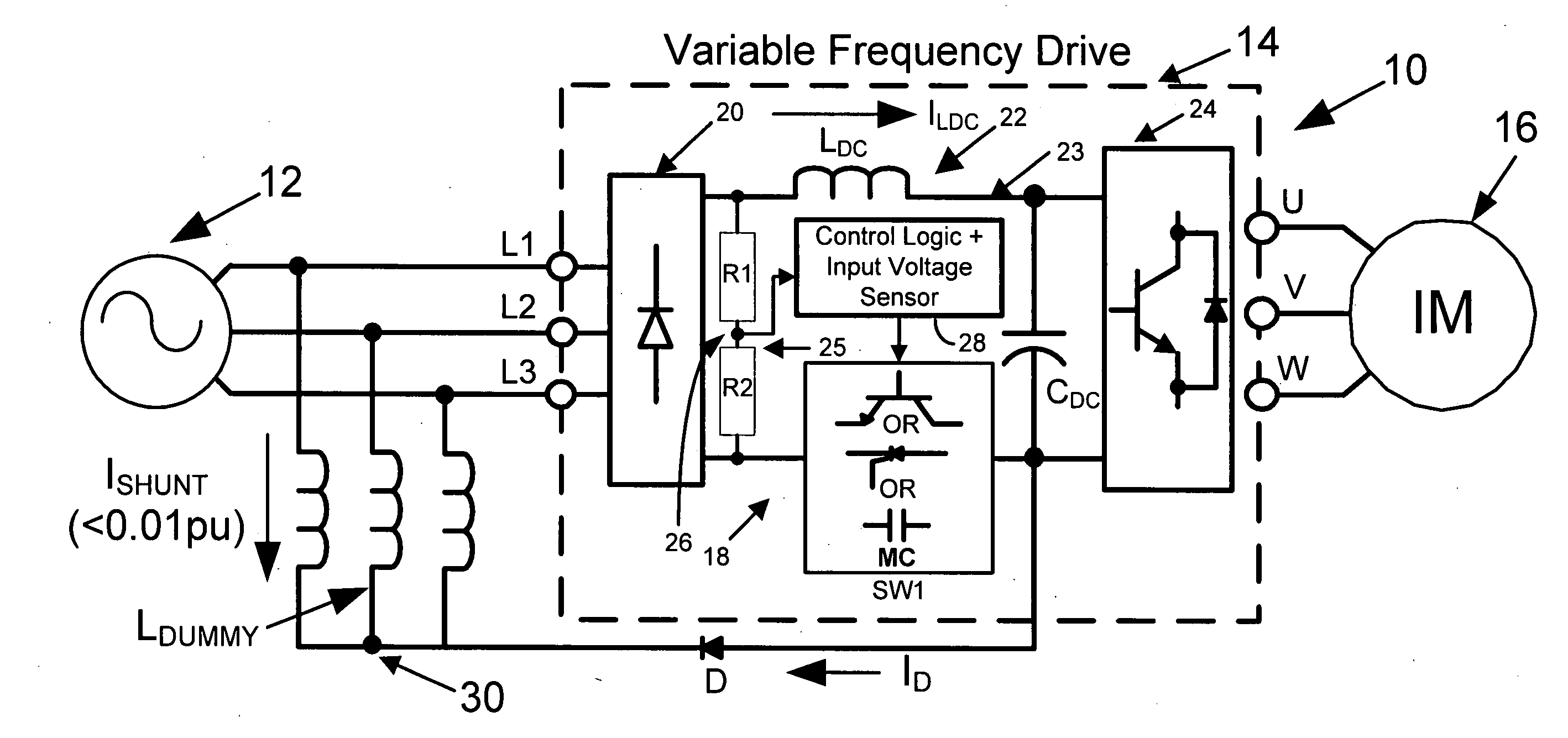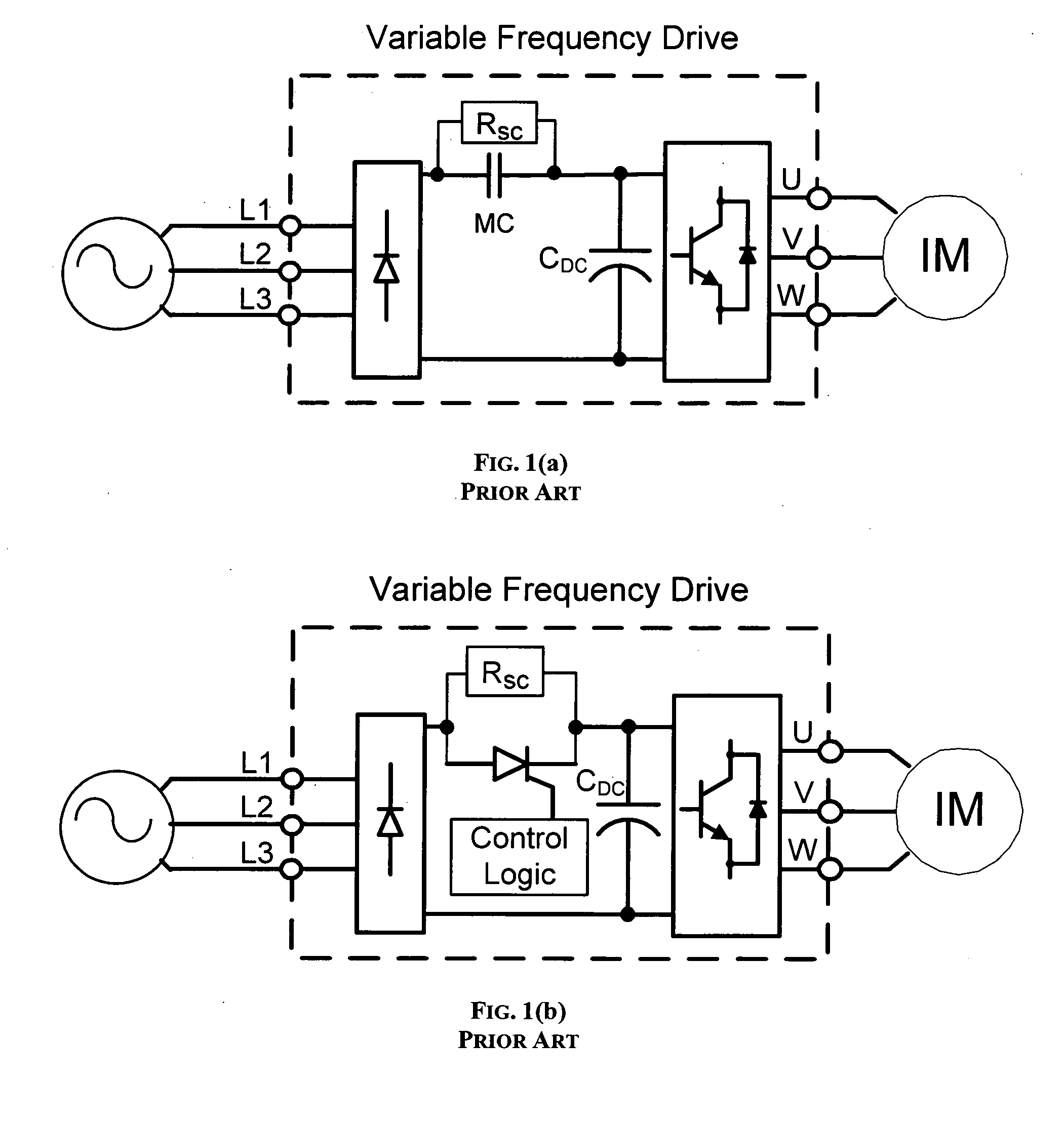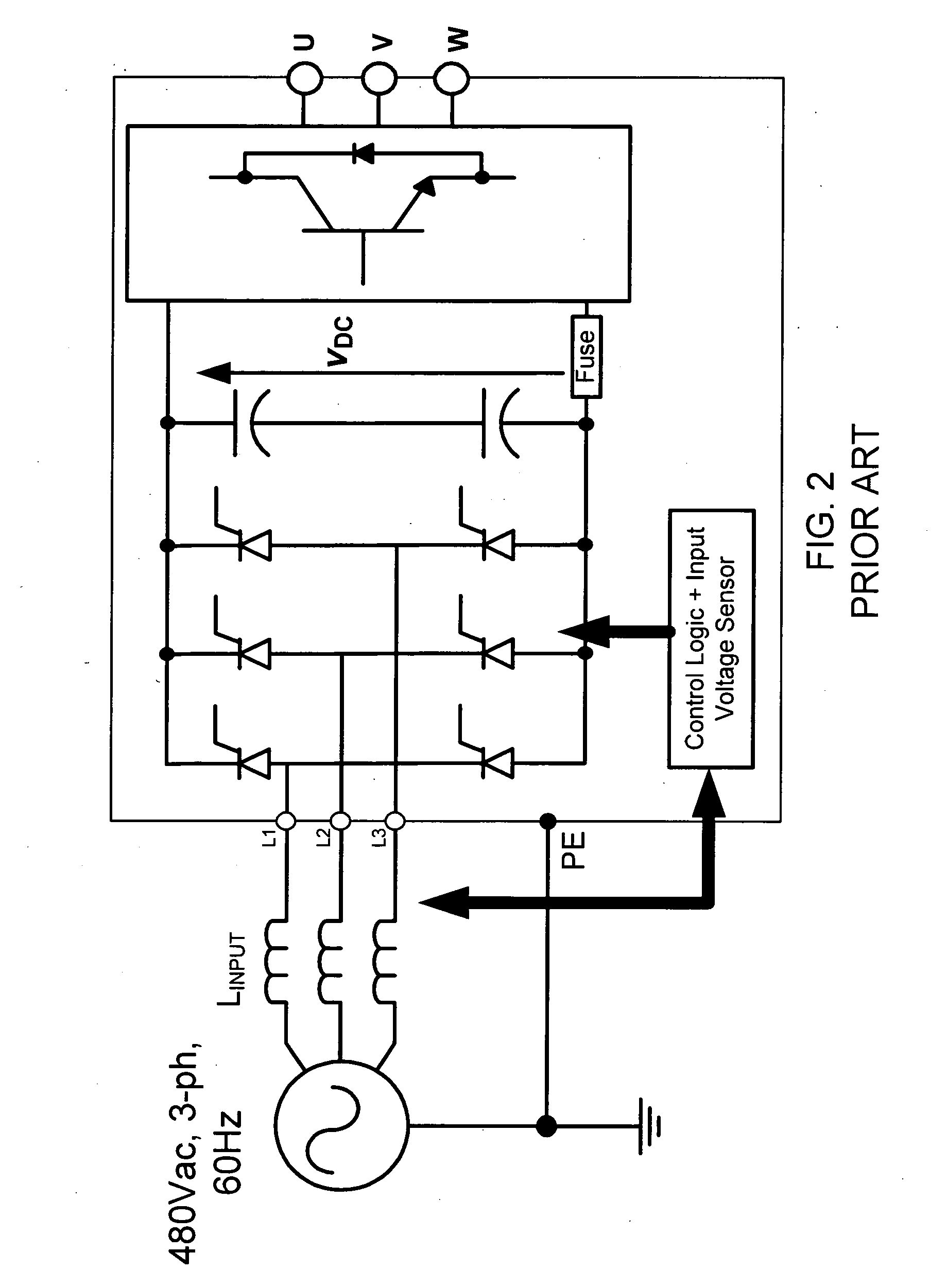Low stress soft charge circuit for diode front end variable frequency drive
a diode front end variable frequency drive and low stress technology, applied in the field of soft charge circuits, can solve the problems of high surge current, harmful system start-up transients, and inability to reverse the dc-ac conversion,
- Summary
- Abstract
- Description
- Claims
- Application Information
AI Technical Summary
Benefits of technology
Problems solved by technology
Method used
Image
Examples
Embodiment Construction
[0034]The present invention uses alternative techniques to soft charge a DC bus capacitor. The technique uses two stage charging and should be able to handle brown out conditions in an efficient manner. The drive unit is both compact and economical. An exemplary topology in accordance with the invention, shown in FIG. 4, generally satisfies these features. The proposed topology includes features similar to a typical star-delta starter used in conventional 3-phase ac motors. The dc bus capacitor is charged as a “semiconverter” at startup. Once the dc bus voltage reaches the steady state voltage dictated by the semiconverter, the full converter configuration is engaged, resulting in a second charge up period. Since the charging is carried out in two stages, the inrush current through the inductor, capacitor, and diode is well controlled with almost no stress. The switching from the semiconverter configuration to the full bridge configuration can either be dictated by level of dc bus v...
PUM
 Login to View More
Login to View More Abstract
Description
Claims
Application Information
 Login to View More
Login to View More - R&D
- Intellectual Property
- Life Sciences
- Materials
- Tech Scout
- Unparalleled Data Quality
- Higher Quality Content
- 60% Fewer Hallucinations
Browse by: Latest US Patents, China's latest patents, Technical Efficacy Thesaurus, Application Domain, Technology Topic, Popular Technical Reports.
© 2025 PatSnap. All rights reserved.Legal|Privacy policy|Modern Slavery Act Transparency Statement|Sitemap|About US| Contact US: help@patsnap.com



